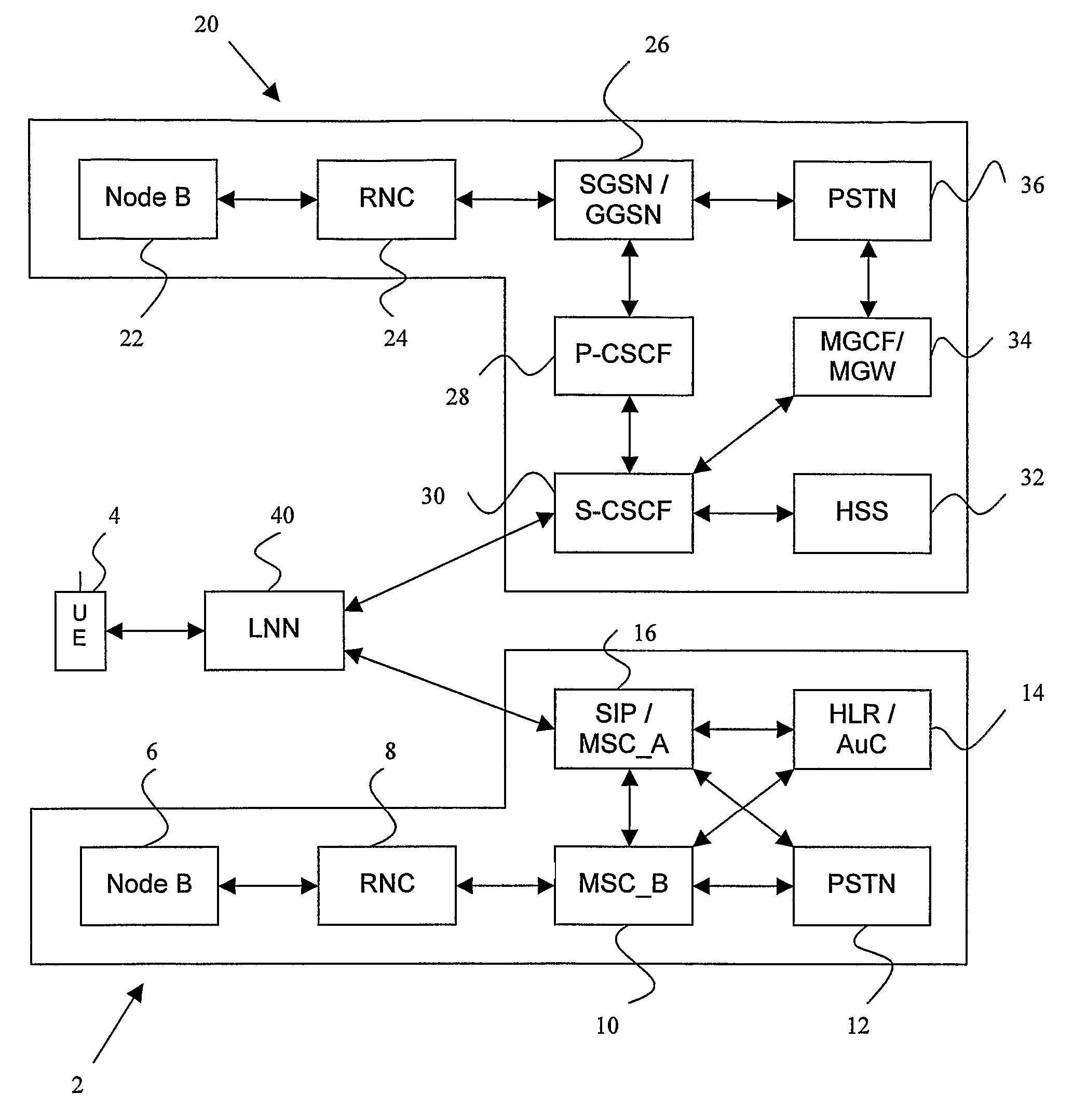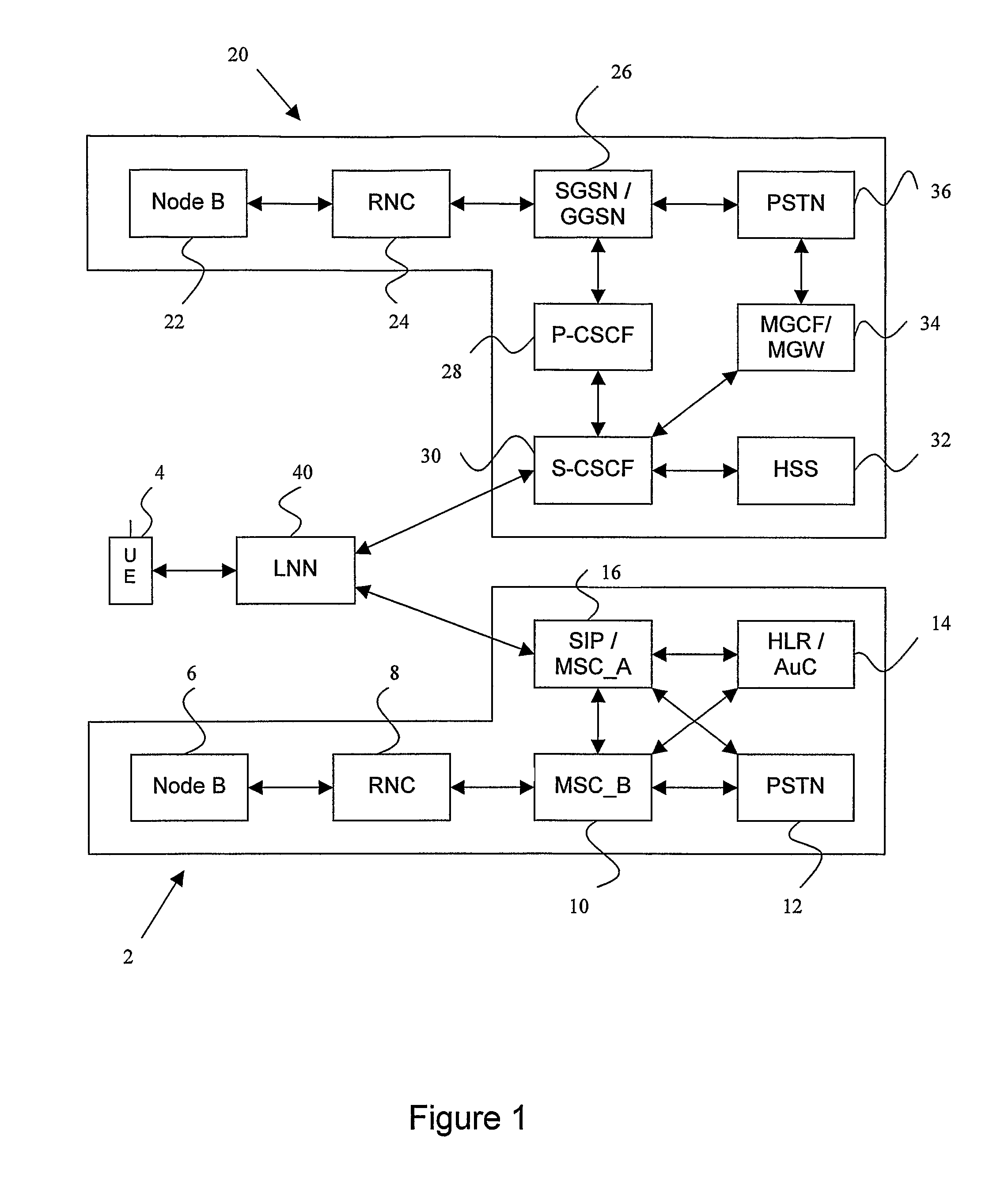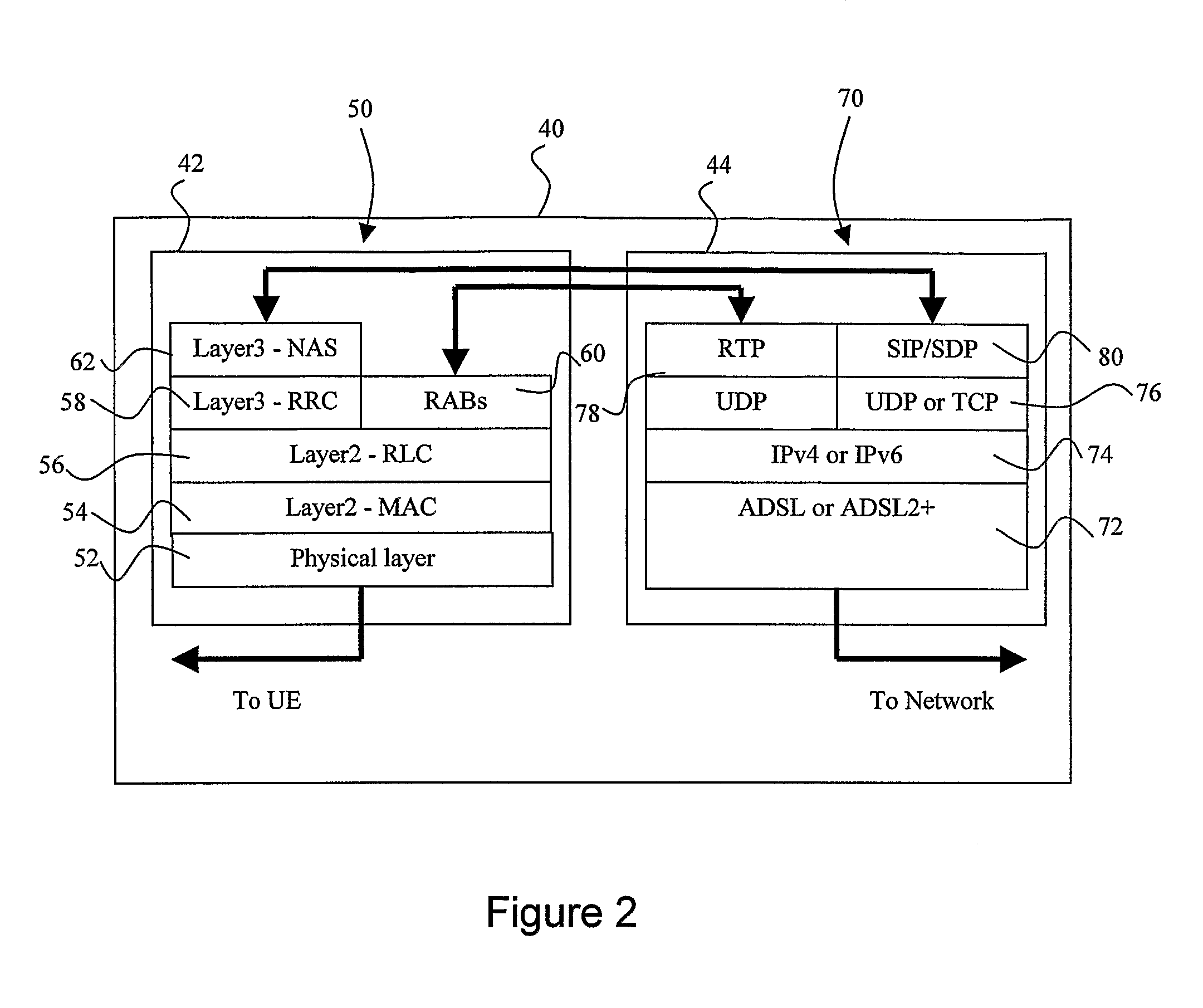Signal transmission method from a local network node
a signal transmission and local network technology, applied in the field of signals transmission methods, can solve the problems of long delay in transmission, inability to guarantee that data being retransmitted will be received without errors, and delays approaching 100 ms, so as to minimise the power needed and optimise the interference effect at the receiver
- Summary
- Abstract
- Description
- Claims
- Application Information
AI Technical Summary
Benefits of technology
Problems solved by technology
Method used
Image
Examples
Embodiment Construction
[0035]The operation of the Local Network Node embodying the invention will now be described in more detail with respect to FIGS. 2 and 3.
[0036]The LNN according to the preferred embodiment of the invention is both a transmitter and a receiver establishing a transmission link with a UE in the coverage cell provided by the LNN. The LNN is also arranged to convert 3G protocol messages received from the UE To SIP messages used to establish and maintain sessions on an Internet Protocol based network. The physical and logical structure of the LNN is illustrated in more detail in FIG. 2 to which reference should now be made.
[0037]The LNN comprises a User terminal side 42 comprising a standard 3G protocol processing stack for communicating with the User Terminal 4 over the air interface, and a Network Side 44 comprising Internet Protocol processing stack 70.
[0038]In known fashion, the 3G protocol stack contains Physical layer 52, above which are located the Layer 2 Medium Access Control (MA...
PUM
 Login to View More
Login to View More Abstract
Description
Claims
Application Information
 Login to View More
Login to View More - R&D
- Intellectual Property
- Life Sciences
- Materials
- Tech Scout
- Unparalleled Data Quality
- Higher Quality Content
- 60% Fewer Hallucinations
Browse by: Latest US Patents, China's latest patents, Technical Efficacy Thesaurus, Application Domain, Technology Topic, Popular Technical Reports.
© 2025 PatSnap. All rights reserved.Legal|Privacy policy|Modern Slavery Act Transparency Statement|Sitemap|About US| Contact US: help@patsnap.com



